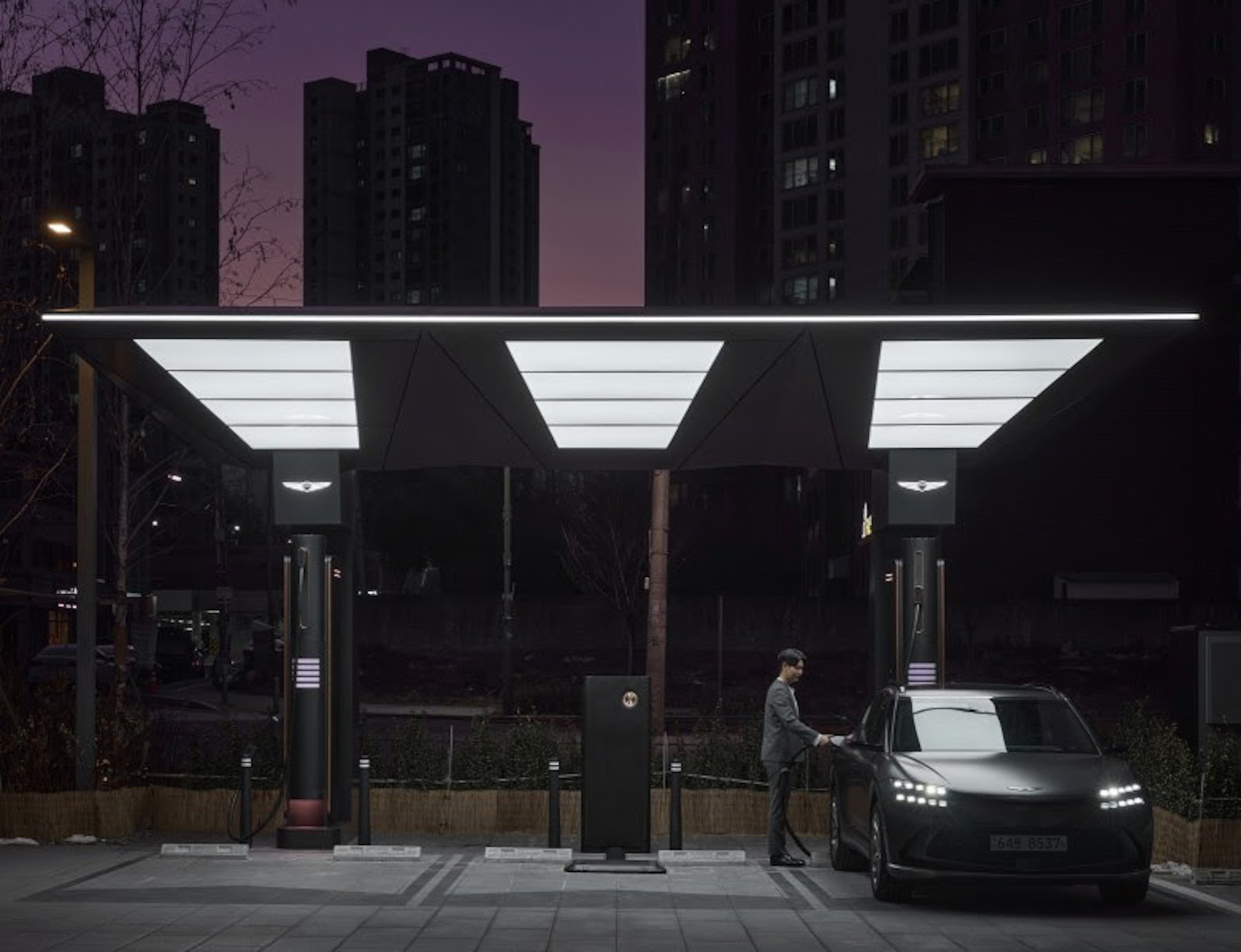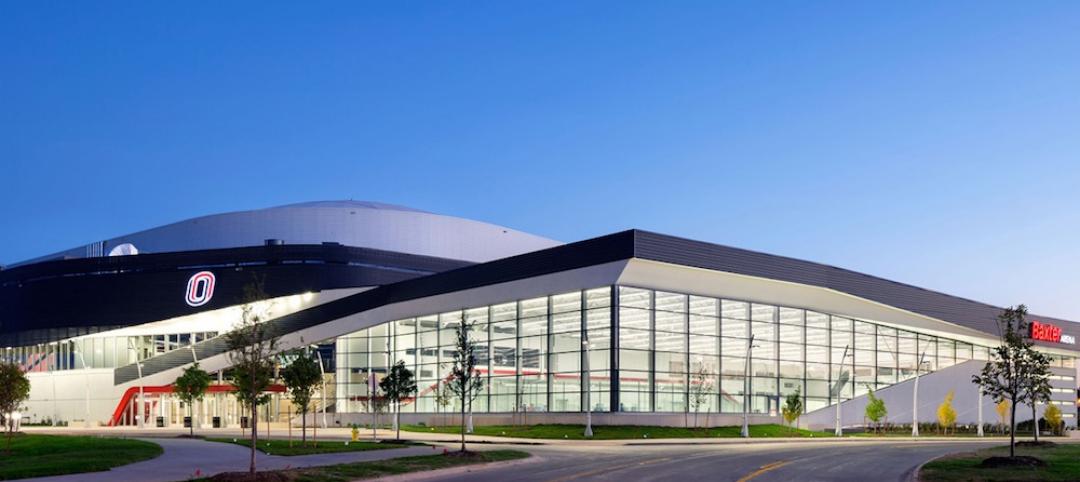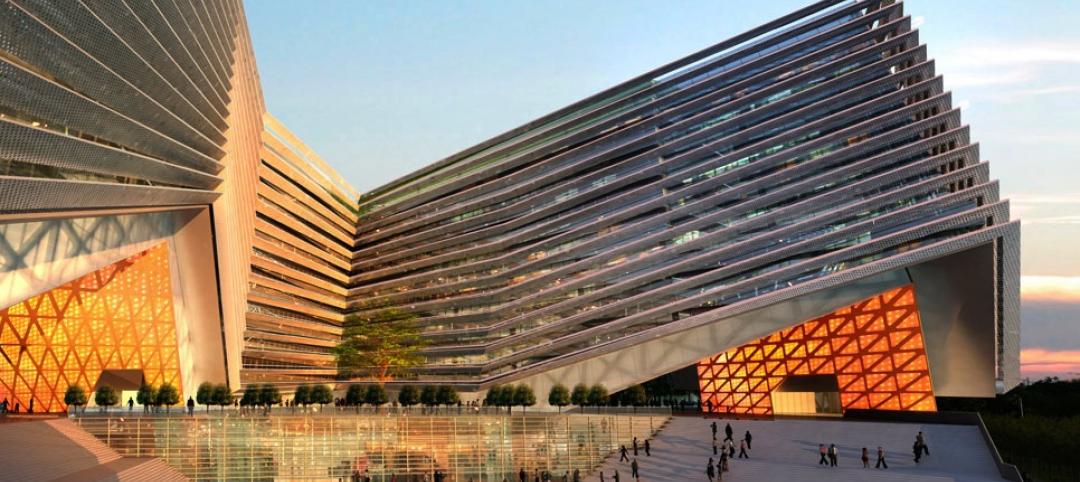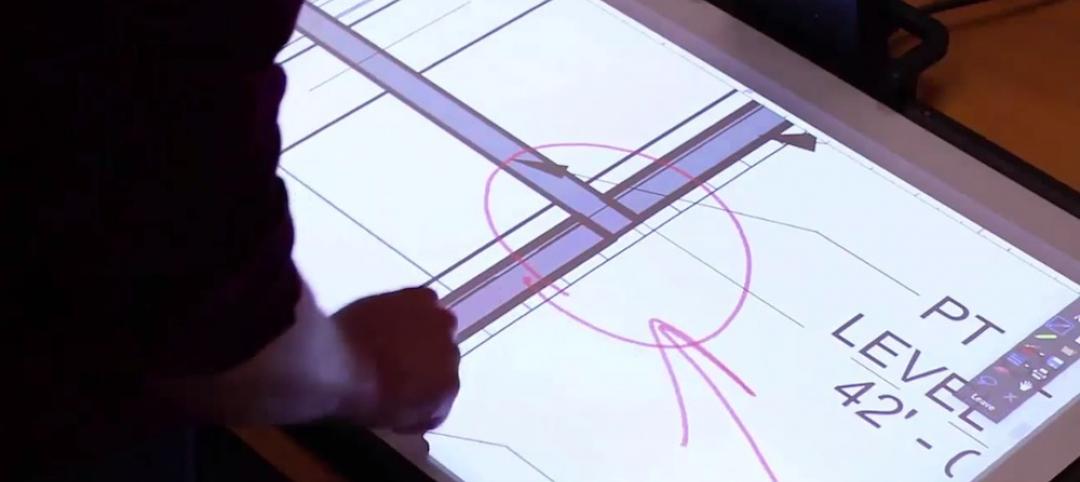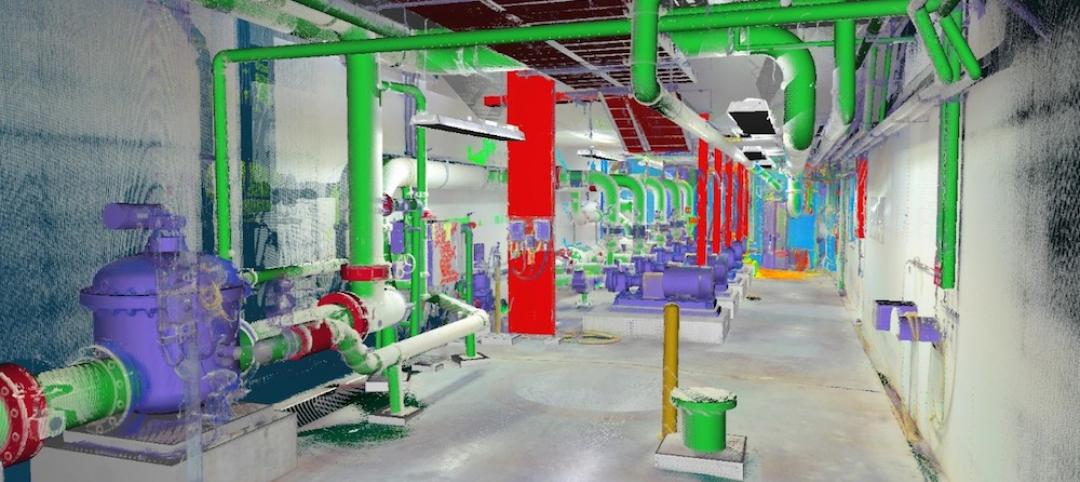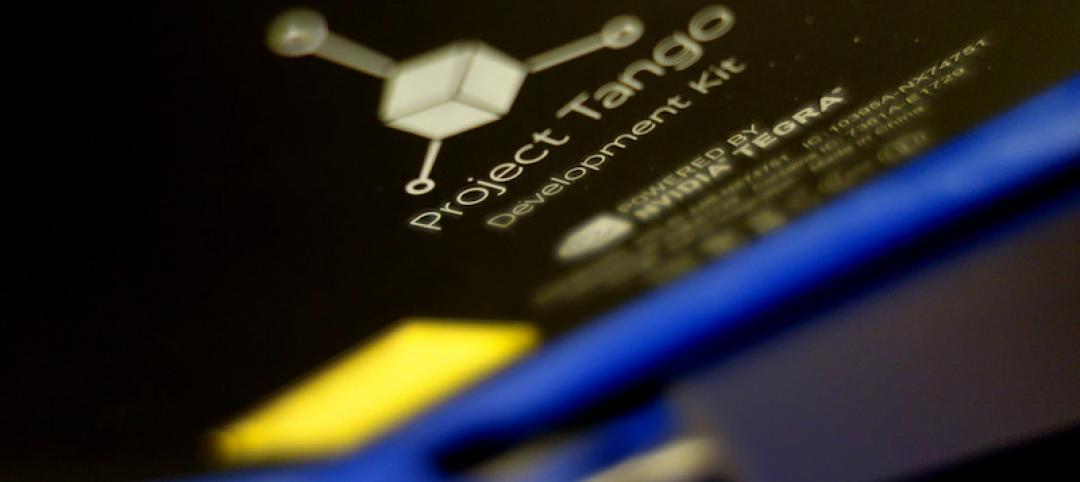With stations completed this month throughout South Korea’s most populated province, Gyeonggi-do, LA-based design and architecture firm Morphosis has partnered with automotive luxury brand Genesis to bring their signature brand and styling, attention-to-detail, and seamless customer experience to the design of Electric Vehicle Charging (EVC) Stations. The first phase of domestic deployment includes five sites throughout South Korea’s most populated metropolitan zones: Seoul and Gyeonggi-do, including stations in Genesis’ flagship showrooms, Suji and Gangnam, as well as other locations in Seoul and Goyang. The canopies are designed to be modularized and replicated in future expansions within Korea and beyond.
“From design concept to the smallest crafted detail, the defining design identity of the Genesis brand are materialized in the charging stations: the wing emblem, the two lines and the Athletic Elegance,” says Morphosis Design Partner Ung-Joo Scott Lee. “As leaders in both design and mobility, we are inspired to imagine new ways of thinking about the infrastructure needed for charging electric vehicles while providing Genesis new opportunities to connect and support its customers as we enter into the era of full vehicular electrification.”
Strategically Designed EVC Stations
The exterior EVC Stations are designed to serve as protective canopies made of aluminum panels on a steel superstructure. The winged form of the canopy is instantly recognizable within the urban environment, with a lightness and elegance that evokes the distinctive Genesis wing emblem and Genesis’ core design identity of “Athletic Elegance.”
The razor-thin canopy edge integrates a continuous LED light feature identifying the charging stations, with future capability of changing colors to indicate the electric vehicle charging level. The stations encompass a range of indoor and outdoor adaptations to respond to different climates and site conditions.
To address the unique existing conditions at each interior location, the design introduces a set of recognizable surfaces and forms identifying the EVC locations. The exterior canopies are designed in three different forms to accommodate different site parameters and requirements. “Double” and “triple” canopies accommodate additional chargers, allowing multiple vehicles to be charged at once. The new EVC stations are compatible with Genesis’ electric vehicles and the ultra-fast chargers can fully charge these vehicles in as little as 20 minutes.
Related Stories
Big Data | May 5, 2016
Demand for data integration technologies for buildings is expected to soar over the next decade
A Navigant Research report takes a deeper dive to examine where demand will be strongest by region and building type.
BIM and Information Technology | May 2, 2016
How HDR used computational design tools to create Omaha's UNO Baxter Arena
Three years after writing a white paper about designing an arena for the University of Nebraska Omaha, HDR's Matt Goldsberry says it's time to cherry-pick the best problem-solving workflows.
Virtual Reality | Apr 29, 2016
NBBJ to develop virtual reality productivity platform
The Seattle design firm has partnered with Visual Vocal, a startup VR company.
Drones | Apr 25, 2016
The Tremco SkyBEAM UAV is the first to be approved by the FAA for nighttime commercial operation
The SkyBEAM UAV is used for identifying energy leaks, rooftop damage, deteriorating façades, and safety issues without requiring scaffolding or cranes.
AEC Tech | Apr 15, 2016
Should architects learn to code?
Even if learning to code does not personally interest you, the growing demand for having these capabilities in an architectural business cannot be overlooked, writes computational design expert Nathan Miller.
Building Tech | Apr 12, 2016
Should we be worried about a tech slowdown?
Is the U.S. in an innovative funk, or is this just the calm before the storm?
AEC Tech | Apr 12, 2016
Startup introduces PaperLight, an interactive projection screen for AEC pros
The device lets users edit sketches, plans, and images with a stylus or their fingers.
AEC Tech | Mar 31, 2016
Deep Learning + AI: How machines are becoming master problem solvers
Besides revolutionary changes to the world’s workforce, artificial intelligence could have a profound impact on the built environment and the AEC industry.
AEC Tech | Mar 17, 2016
Managing risks with laser scanning gives AEC firms an edge
The more that clients demand the service, the easier it is to justify the cost of laser scanning equipment and software.
AEC Tech | Mar 15, 2016
Two to tango: Project Tango isn’t just for entertainment, it also has a wide range of possibilities relating to the professional world
Making things like augmented reality, precise measurements of indoor spaces, and indoor wayfinding possible, Google’s Project Tango has all the makings to become a useful and ubiquitous tool in the AEC market.


